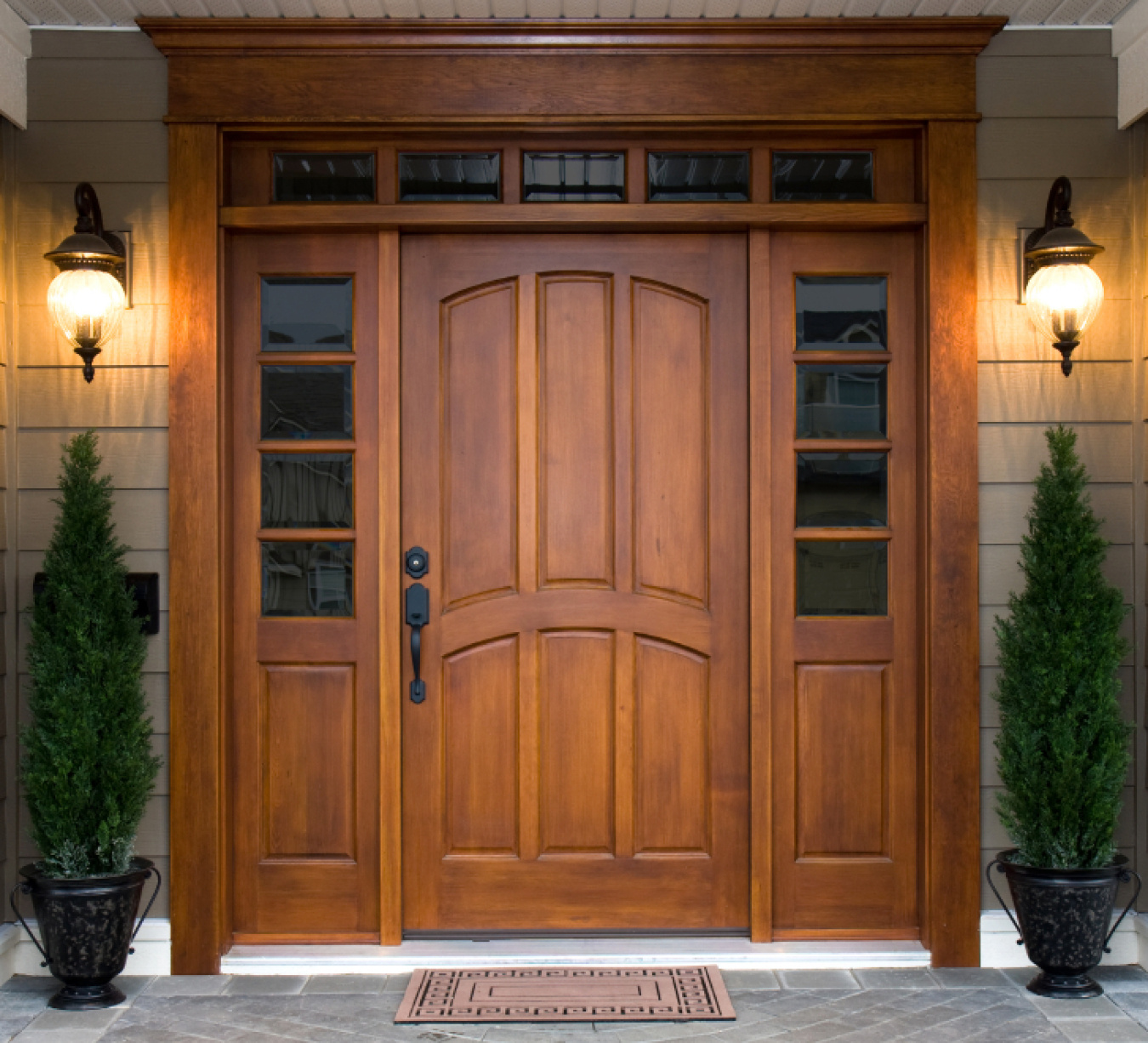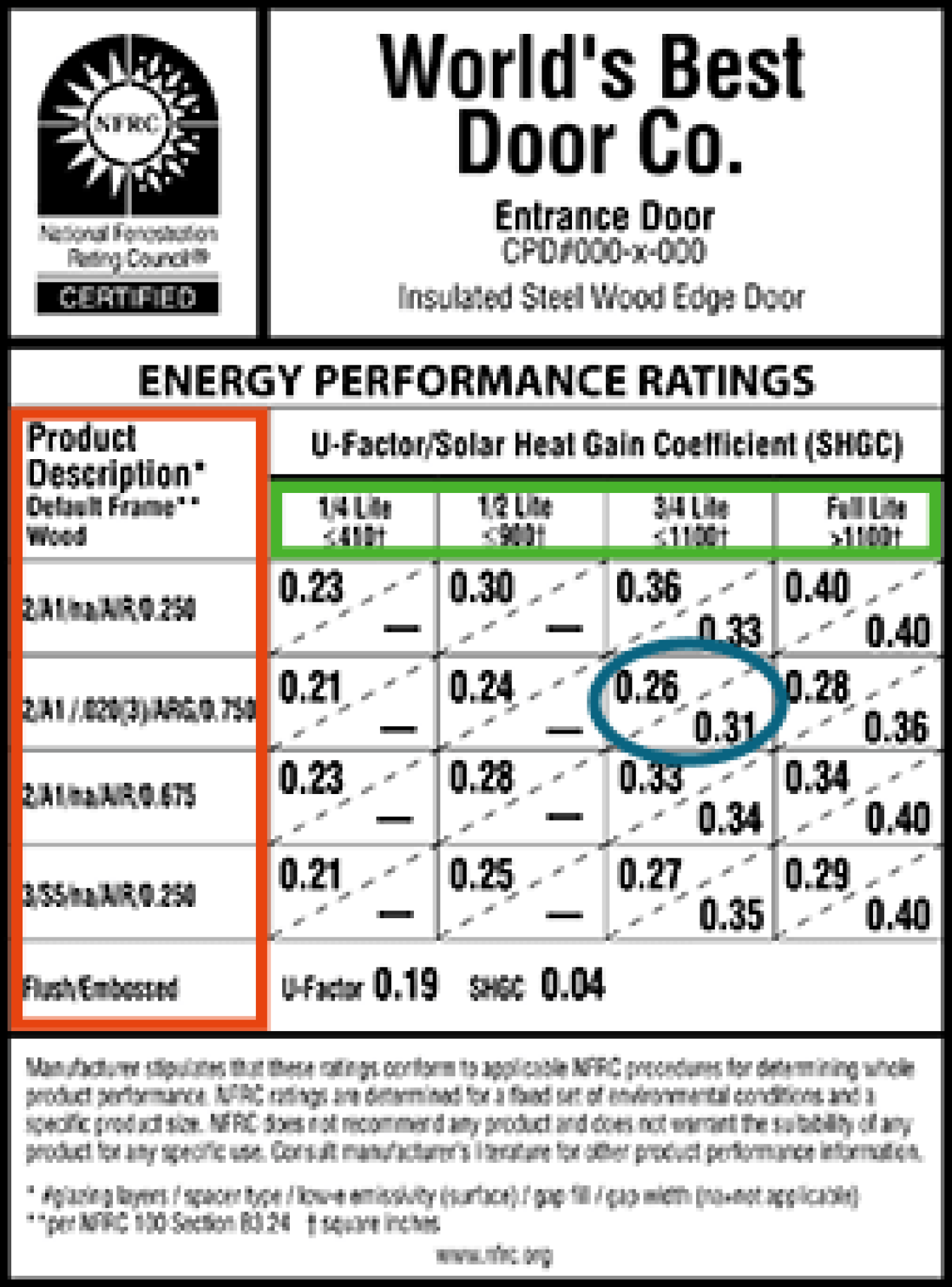Your home's exterior doors can contribute significantly to air leakage, and can also waste energy through conduction, especially if it's old, uninsulated, improperly installed, and/or improperly air sealed. Weatherstripping can reduce the energy losses due to air leakage.
Selecting New Exterior Doors

Although many people choose wood doors for their beauty, insulated steel and fiberglass doors are more energy-efficient. | Photo courtesy of ©iStockphoto/cstewart
New exterior doors often fit and insulate better than older types. If you have older doors in your home, replacing them might be a good investment, resulting in lower heating and cooling costs.
If you're building a new home, you should consider buying the most energy-efficient doors possible.
When selecting doors for energy efficiency, it's important to first consider their energy performance ratings in relation to the local climate and your home's design. This will help narrow your selection. Look for the ENERGY STAR label to help identify energy efficient products for your climate.
The National Fenestration Rating Council (NFRC) label helps you compare energy performance ratings of doors. The label shows the solar heat gain coefficient (SHGC) and U-factor for the door. Learn more about the NFRC label.
Look for a low SHGC in a climate that mainly requires cooling and a high SHGC in a climate that requires heating. The range is from 0 to 1. SHGC measures how well a product keeps out solar heat.
Look for a low U-factor. The lower the U-factor, the better the door keeps in heat.

Types of Doors
One common type of exterior door has a steel skin with a polyurethane foam insulation core. It usually includes a magnetic strip (similar to a refrigerator door magnetic seal) as weatherstripping. If installed correctly and not bent, this type of door needs no further weatherstripping.
The R-values of most steel and fiberglass-clad entry doors range from R-5 to R-6, excluding a window. For example, a 1-1/2 inch (3.81 cm) thick door without a window offers more than five times the insulating value of a solid wood door of the same size.
Single-pane glass or "patio" doors, especially sliding glass doors, lose much more heat than other types of doors because glass is a very poor insulator. Models with several layers of glass, low-emissivity coatings, and/or low-conductivity gases between the glass panes are a good investment. Most modern glass doors with metal frames have a thermal break, which is a plastic insulator between inner and outer parts of the frame. When buying or replacing patio doors, swinging doors generally offer a tighter seal than sliding types. Look at NFRC labels to find air leakage ratings. A door with one fixed panel will have less air leakage than a door with two operating panels.
It's impossible to stop all the air leakage around the weatherstripping on a sliding glass door and still be able to use the door. In addition, after years of use the weatherstripping wears down, so air leakage increases as the door ages. If the manufacturer has made it possible to do so, you can replace worn weatherstripping on sliding glass doors.
Installation
When you buy a door, it will probably be pre-hung. Pre-hung doors usually come with wood or steel frames. You will need to remove an existing doorframe from the rough opening before you install a pre-hung door. The doorframe must be as square as possible, so that the door seals tightly to the jamb and swings properly.
Before adding the interior trim, apply expanding foam caulking to seal the new doorframe to the rough opening and threshold. This will help prevent air from getting around the door seals and into the house. Apply carefully, especially if the frame is wood, to avoid having the foam force the frame out of square.
New, pre-hung exterior doors should have weatherstripping already installed. Check the weatherstripping on your exterior doors annually to see if it needs replacement.
Storm Doors
Adding a storm door can be a good investment if your existing door is old but still in good condition. However, adding a storm door to a newer, insulated door is not generally worth the expense, because you won't save much more energy.
If you plan to purchase a storm door, consider features that improve the energy efficiency.
Storm door frames are usually made of aluminum, steel, fiberglass, or wood (painted or not). Wooden storm doors require more maintenance than the other types. Metal-framed storm doors might have foam insulation inside their frames for added strength.
High-quality storm doors use low-emissivity (low-e) glass or glazing to increase energy efficiency. Other features may include screens with self-storing pockets, full-length screens with removable glass panels, and screens and glass that slide past each other. All of these features add convenience and cost.
A glass storm door could trap heat against an entry door and cause damage if the exterior door gets more than a few hours of direct sun each day. Low-e glass will reduce the heat gained. Check the door manufacturer's recommendations if this is a concern.
Storm doors for patio doors are hard to find, but they are available. Adding one to a new, multi-glazed low-e door is seldom economic. Insulating attachments such as cellular shades, when closed for the night in winter or on sunny days in summer, are also a good idea.
Related Resources
-
-
- Windows, Doors, & Skylights
- Home Weatherization
March 11, 2024 -
- Home Weatherization
- Design & Remodeling
November 17, 2025
Subscribe to receive updates from Energy Saver, including new blogs, updated content, and seasonal energy saving tips for consumers and homeowners.

